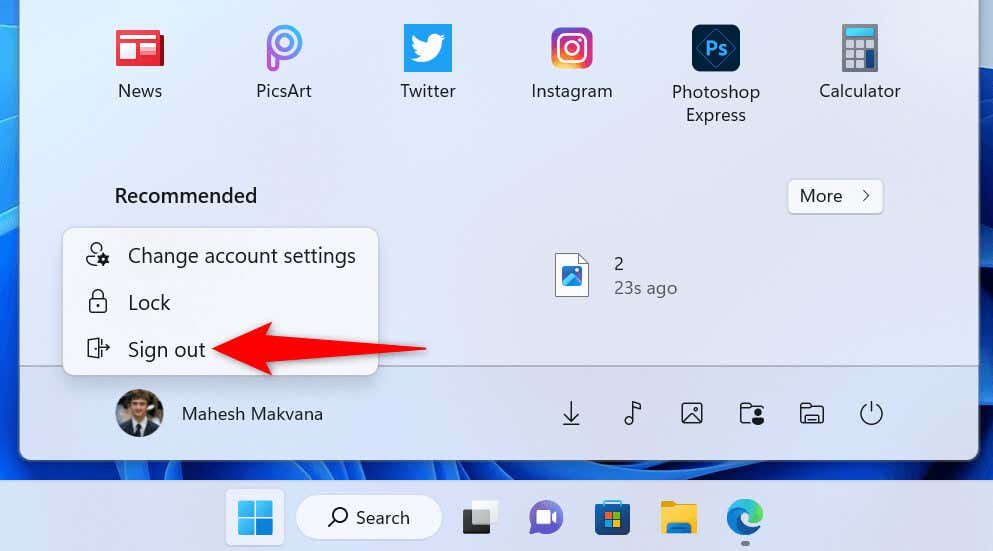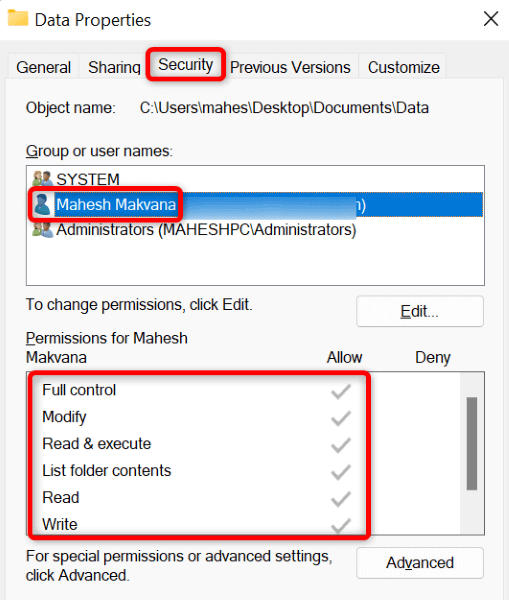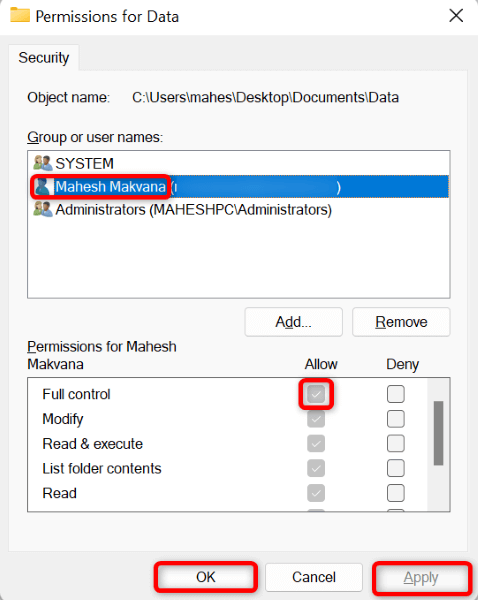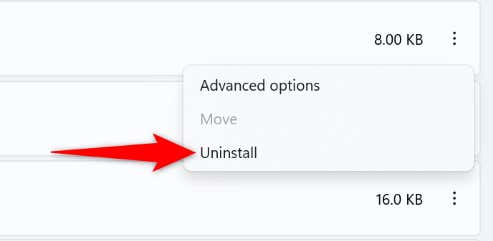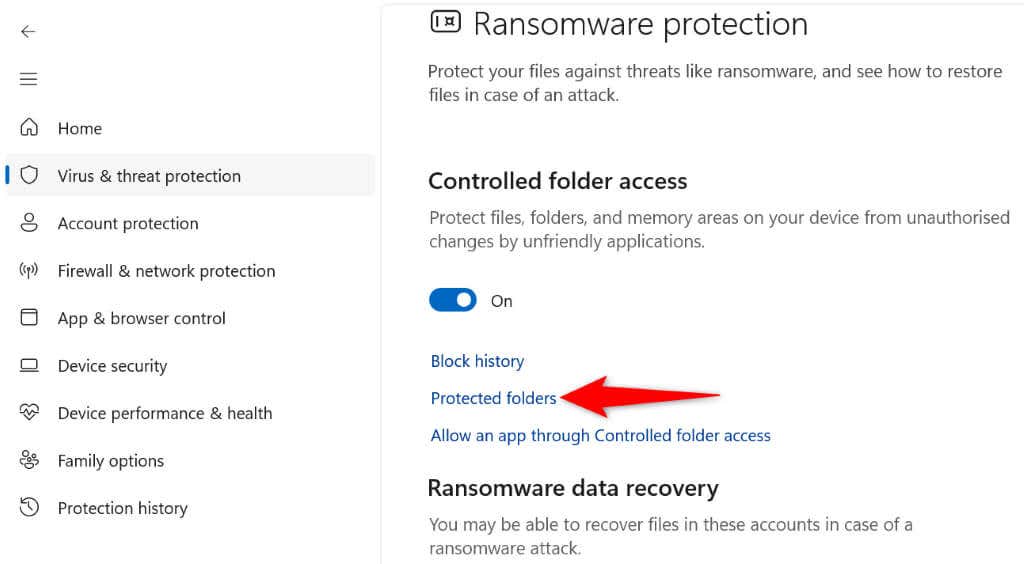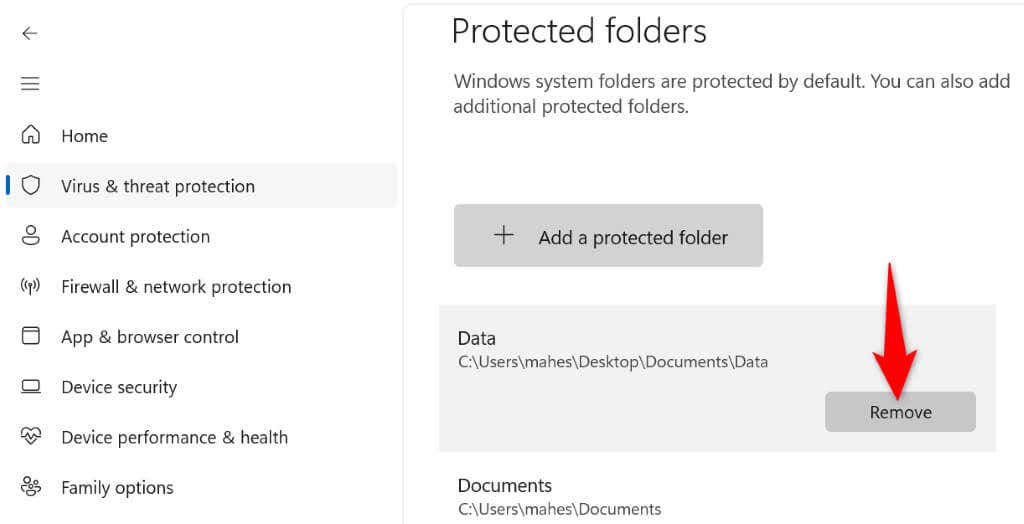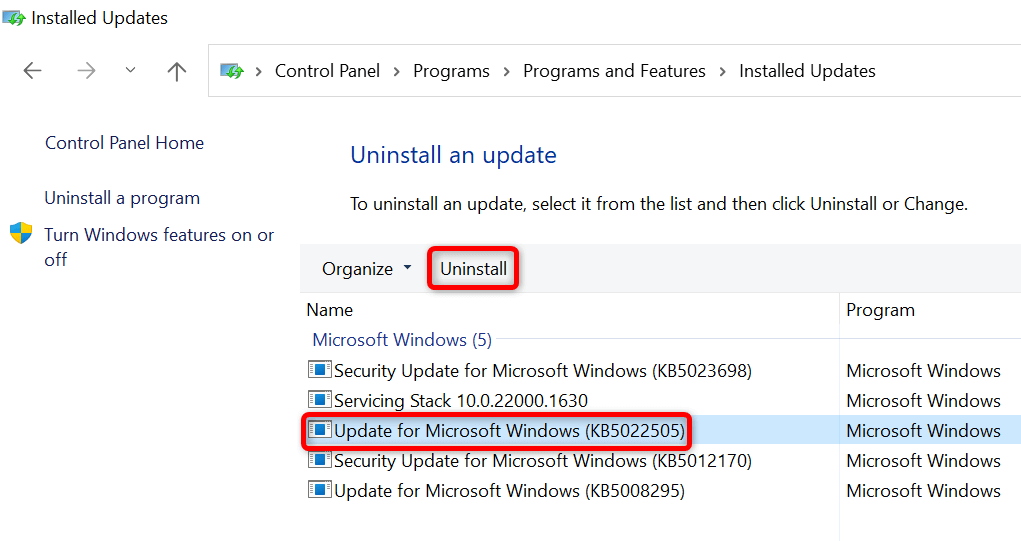Windows prevents you from making changes to your folder because you or someone else has enabled the read-only option for the folder, you don’t have required permissions to modify the folder, a Windows update is causing the problem, and more.
Disable Windows’ Read-Only Folder Attributes
One easy way to make your folder writable is by turning off Windows’ read-only option for your folder. You can make this change using the folder’s Properties window.
Log In to an Admin Account on Your Windows 10/11 PC
One reason you can’t make changes to your folder is that you’re using a regular account (which has basic permissions) on your PC. You can log in to an administrator account on your PC and try making changes to your folder.
Ensure You Have the Required Access for the Folder
Windows allows you to set various permissions for your folders and files. It’s possible someone has revoked the edit access for this folder on your system, preventing you from making changes to the folder. You can review your account permissions as follows: If you don’t have the permissions to edit the folder, ask an admin account holder on your PC to give you the permissions. Here’s what an admin needs to do to change permissions:
Remove the Folder-Locking Apps From Your PC
You may have installed an app that allows you to lock folders on your PC. It’s possible this app has revoked the edit access for your folder, preventing you from altering the folder or its contents. In this case, remove the folder-locking app from your PC, and your issue will be resolved.
Manage Controlled Folder Access on Your Windows PC
Your PC’s Windows Security app offers an option that allows you to block any changes to be made to your folders. You or someone else may have toggled on this option, causing your issue. In this case, turn off the feature in the app, and your issue will be fixed. If you want to keep the feature enabled, you can remove your folder from the restricted list. This way, you can make changes to your folder while keeping Windows Security’s feature enabled.
Uninstall a Faulty Windows Update
If your folder has started going back to the read-only mode after you installed a specific Windows update, that update might be the culprit. In this case, you can roll back the update to fix your issue.
Run System Restore on Your Windows PC
If you made certain changes to your PC and you lost the ability to make changes to your folder, you can roll back your system changes and fix your issue. You can do this by restoring a system restore point on your PC.
Prevent Your Windows Folder From Going Back to the Read-Only Mode
There are various reasons your Windows folder keeps reverting to the read-only status. If you’ve made any changes to your system lately or installed a folder-locking app, that may be why you have the problem. Use the methods outlined above, and your issue will be fixed. You can then start making whatever changes you want to your folder. Good luck!


